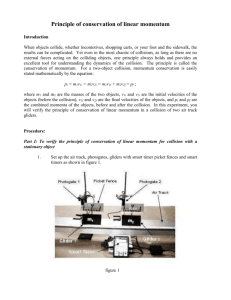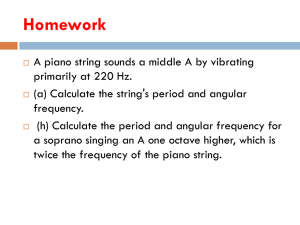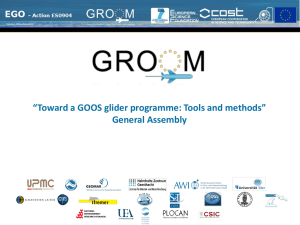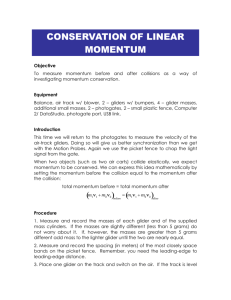Conservation of Mome..
advertisement
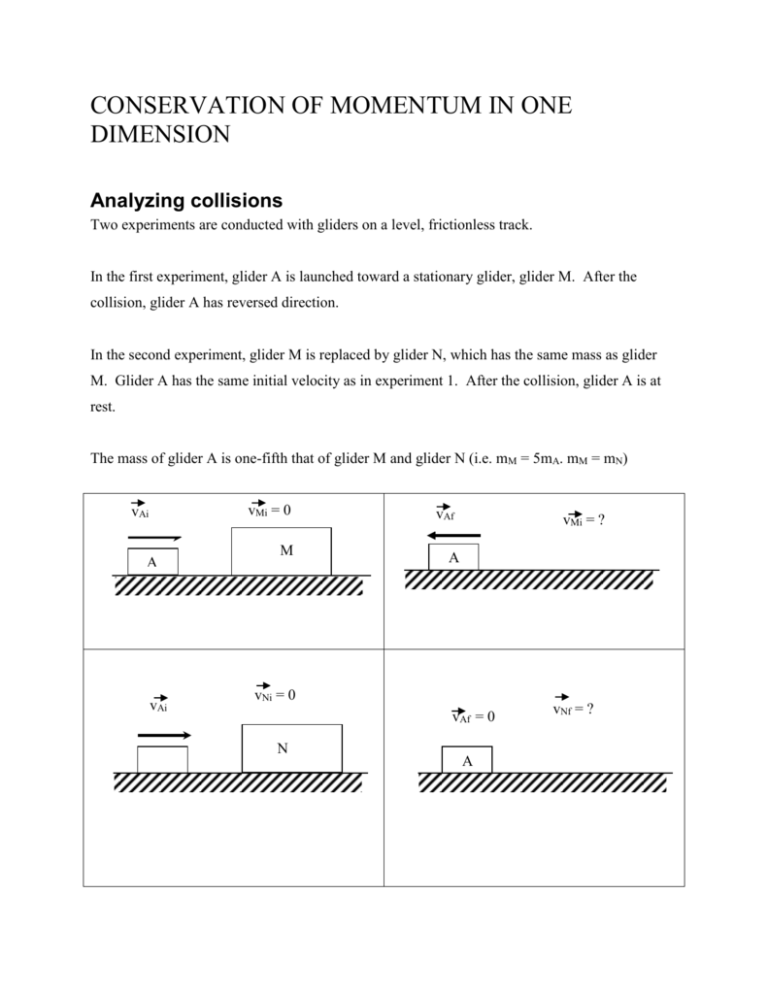
CONSERVATION OF MOMENTUM IN ONE DIMENSION Analyzing collisions Two experiments are conducted with gliders on a level, frictionless track. In the first experiment, glider A is launched toward a stationary glider, glider M. After the collision, glider A has reversed direction. In the second experiment, glider M is replaced by glider N, which has the same mass as glider M. Glider A has the same initial velocity as in experiment 1. After the collision, glider A is at rest. The mass of glider A is one-fifth that of glider M and glider N (i.e. mM = 5mA. mM = mN) vMi = 0 vAi M A vAi vMi = ? A vNi = 0 vAf = 0 N A vAf A vNf = ? Conservation of momentum in one dimension Part I page 2 of 3 A. What differences between gliders M and N could account for their differences in behavior during the collisions? B. For experiment 1 draw and label separate free-body diagrams on a separate sheet of paper. Label while the gliders are in contact. Label diagrams Analyzing Collisions section B Glider A Glider M 1. While the gliders are in contact, how does the net force on glider A compare to the net force on glider M? Discuss both magnitude and direction. How if at all, would this comparison differ if you had chosen a different instant (while the gliders are still in contact)? Explain. 2. Consider the small time interval ( to) while the gliders are still in contact. For the two gliders, how does the product FnetA to compare to the product FnetM to? Discuss both magnitude and direction. Explain. Apply Newton’s second law (Fnet = m v ) each of the colliding gliders in experiment 1 to t compare the change I momentum = mv of gliders A and M during the collision. Discuss both magnitude and direction. Explain. On a separate sheet of paper Label diagrams Analyzing Collisions section C Draw and label vectors to represent the initial momentum (i), the final momentum(f) and the change in momentum() of glider A in each experiment. Conservation of momentum in one dimension Part I page 3 of 3 1. Is the magnitude of the change in momentum of glider A in Ex 1 greater than, less than, or equal to the magnitude of the change in momentum of glider A in ex 2? Explain. 2. Is the magnitude of the change in momentum of glider M in ex. 1 greater than, less than, or equal to the magnitude of the change in momentum of glider N in ex. 2? Explain. After the collisions, is the speed of glider M greater than, less than or equal to the speed of glider N explain. D. a student compares the final speeds of gliders M and N. “In experiment 2 glider A transfers all of its momentum to glider N, whereas in experiment 1 glider A has some momentum left so glider M does not get as much. Therefore, glider N has a greater final speed than glider M.” Do you agree or disagree with this statement? Explain.


